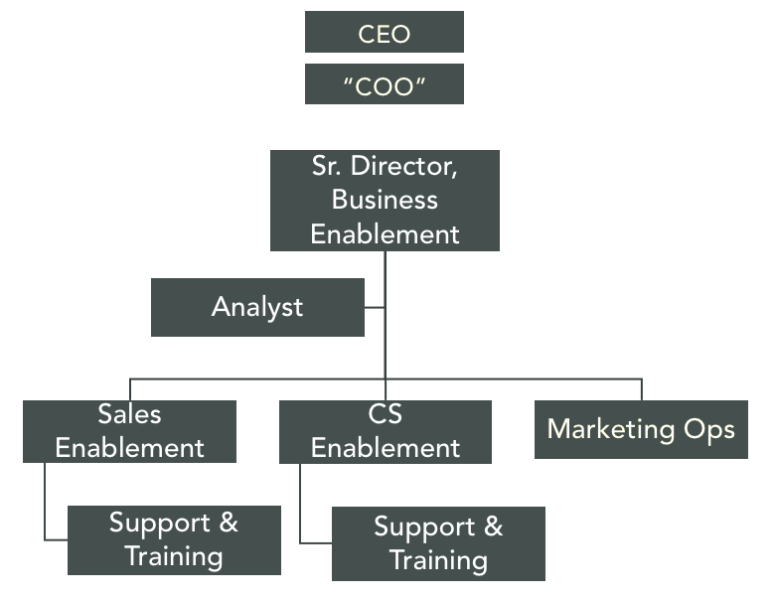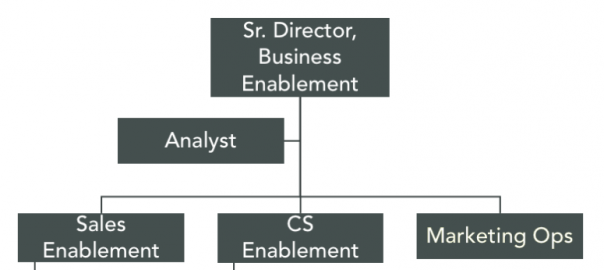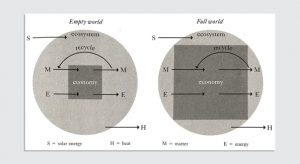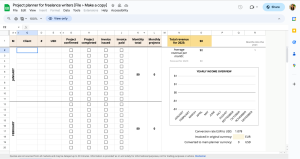Contributor Debbie Qaqish describes the structure of a company taking marketing operations to the next level.

In last month’s article, I introduced an updated marketing operations (MO) maturity model defining the five stages of maturity: Unaware, Efficient, Effective, Customer-centric and NextGen.
The last two stages of maturity — Customer-centric and NextGen — are particularly important as marketing takes on the massive responsibility of helping the company pivot to a customer-centric strategy. B2B marketers are really struggling to operationalize customer-centricity.
In 2015 report, McKinsey found that while 44 percent of companies surveyed focused resources primarily on customer experience rather than product, only 13 percent feel they had effectively identified their customers’ decision journeys. Thus, they struggle to know where to focus marketing and have difficulty leading the change and improving business performance in terms of revenue and growth.
On the flip side, other B2B MO teams are ready for this challenge and thrive in this new environment. One indicator of early success is how the MO team is organized. An org chart truly paints a thousand words, as structure follows strategy. How the MO executive organizes resources to deliver the business goals is essential to success.
Last month, we looked at an early customer-centric MO team; this month, we’ll review a NextGen company.
Case study
When I evaluate a MO organization, I begin with their charter, their set of guiding principles or the reason they come to work every day. For the company in this example today, the MO charter and the company charter are well-aligned.
The company charter is to reimagine their industry through innovation. The MO charter is to enable customer-facing employees with the tools they need to be efficient and effective in their day-to-day jobs and to create the “golden thread” between all customer journey decision points and paths.
I am speaking in general terms about this company because, as you can see in the org chart below, there is no MO team. What makes this MO group a NextGen organization is that they have broken down traditional silos by creating a Business Enablement (BE) structure that includes sales ops, marketing ops and customer success ops.
Additionally, this structure reports into the acting COO. This is a trend that I am seeing. Once sales ops and marketing ops begin to combine and even include other parts of the organization, reporting into the COO starts to make sense.

This org structure was driven by the desire of the CEO to create a single view of the customer and to fully pivot away from a product focus and to a customer focus. Let’s look at each aspect of the org chart.
Note the name of the team is not marketing operations; it is Business Enablement (BE). The purpose of the name is to denote more of an action orientation — toward enabling customer-facing employees with technology, process and people. The role of the combined team is to create a horizontal view and align all functions for a cohesive customer experience.
The org chart can be viewed as a wheel with a center and a set of spokes. The Business Enablement team is the center spoke, and they work with all areas of the business to deliver the customer experience. A lot of crossover is managed by the BE team as it acts as the main communication vehicle around all things related to the customer journey.
Anything that might touch the customer — either a prospect moving to becoming a new customer or a current customer — is managed by the BE team. Approvals, help, optimizations and communications around any customer touch points are driven by the BE group.
Leader of the BE team: Senior director of business enablement
The leader of the BE team is charged with creating an optimal customer experience through the application of technology, process, data and oversight. In order to most effectively mine and share relevant and objective customer insights, the Analyst role reports directly to the Director.
The Analyst is responsible for reviewing, analyzing and creating actionable insights for sales, for customer success and for marketing. These customer insights are also shared with the executive team with the goal of improving decision-making. Having the Analyst role live outside the vertical functions ensures data analysis objectivity that leads to better decisions for the business.
The verticals
Reporting to the head of BE are three managers, one for each vertical: sales ops, customer success ops and marketing ops. These managers support sales, customer success and marketing. Each vertical manager has a similar set of responsibilities: technology, training, messaging and support.
For technology, each manager is responsible for all aspects of the technology required to support the vertical from sourcing, implementing, optimizing, supporting to vendor management. Individual verticals aren’t responsible for data analysis as that function resides in the Analyst role. Analysts are responsible for the state of the data.
Managers do not make technology decisions in a silo. As much as possible, every technology is evaluated for use across all verticals. If marketing ops needs a particular kind of technology, there are considerations to make in the process.
Here are the key questions to be answered:
- First, is there a similar technology in use in the other two verticals?
- Will this technology address pain points in the other two verticals?
- Can it be effectively integrated into the current stack managed by BE?
- Will it help improve the customer experience? Decision-making around the martech stack must support sales, marketing and customer success.
As an interesting aside, BE in this company does not manage the data map; it is managed by marketing. The BE team will step in occasionally to help optimize certain areas, however, the BE team (the Analyst) is responsible for data analysis.
In addition, a key role in the technology and support functions is a dedicated tech support person who provides day-to-day assistance. Half the battle with mastering any technology is getting people to use it; the other half of the battle is to get them to use it effectively.
Having a dedicated person who can express empathy with the users ensures systems are optimally used and ROI is gained. This is a unique role, and one that I have not seen in many companies. As the MO capability continues to grow across functions and the number of technologies continues to grow, having a dedicated training and support person is key. Of course, training is fundamental to this process.
The odd function for each vertical is messaging. While it may seem strange at first, it makes sense in a customer-centric organization. Together, the verticals and marketing work to ensure messaging and content are optimized for the customer experience across all functions. They also work to ensure consistent use of messaging and content. This way, no matter what part of the company a customer interacts with, consistency and thought is given to optimizing each touch point both for the customer and for the company.
Conclusion
I’ve had the opportunity to work with this company over the last 18 months. They began with a desire to focus more on the customer, so their first org chart was a combination of marketing ops and sales ops. This was a great first step, but to become a NextGen MO group, they had to take it a step further.
That step was adding customer support, setting up the BE team as the source of truth around the customer and adding the Analyst role as a direct report — not in a vertical, but to the head of the BE team. For many companies, breaking down traditional silos like this may be almost impossible. Yet, it guarantees a better customer experience and better business results. The B2B customer is looking for the B2C experience in all interactions with your company. Someone has to call the shots to create a cohesive experience. In this company, it’s the BE team.
Opinions expressed in this article are those of the guest author and not necessarily Marketing Land. Staff authors are listed here.
Marketing Land – Internet Marketing News, Strategies & Tips
(80)




